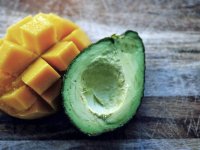Feeding the Teacher’s Brain: Nutrition Tips for Busy Educators
By rejecting persistent nutrition myths and starting the day with a healthy meal, teachers can improve their own performance while modeling brain-friendly habits for their students.
Your content has been saved!
Go to My Saved Content.Teaching is a cognitively complex profession. In the course of a single school day, an educator must make hundreds of decisions and respond quickly to the myriad unexpected turns that life in the classroom may take. You have a high-energy job, so it's essential to prime your brain and body with the right fuel.
But in the busy life of a teacher, who has time to think about healthy eating, much less sorting through the sometimes-conflicting claims about the nutritional value of various food choices? Unfortunately, the less we think about what we eat, the worse our diets may be -- especially if we default to snacking on so-called convenience foods that are high in sugar and saturated fats and low in nutrient-dense ingredients that sustain energy levels.
Persistent Nutrition Myths
Consider a few common myths about nutrition that can lead to "brain bonk" and low energy throughout the school day:
Myth: Proper nutrition is only about fueling a healthy body.
Food Fact: Don't forget about feeding your brain! The brain consumes calories, too, about 600 per day on average. Food choices that support cardiovascular health -- a diet primarily consisting of non-starchy vegetables and fruits, healthy oils and fats, a variety of protein sources, and selected whole grains -- are also good for the brain and may enhance cognitive functioning across the lifespan.
Myth: Loading up on carbs provides a reliable source of sustained energy.
Food Fact: The calories from added sugar and refined starches and grains may produce a brief energy surge -- one that quickly fades to lethargy. Reducing the consumption of foods with added sugar, which includes many prepared foods and snacks, is the top recommendation in the newly-released 2015-2020 Dietary Guidelines for Americans.
Myth: Fats are bad.
Food Fact: The updated Dietary Guidelines continue to advise limiting the consumption of saturated fats, found primarily in red meats and dairy products. However, monounsaturated and polyunsaturated fats, which are key ingredients in the much-touted Mediterranean diet, have been found to have positive effects on blood cholesterol levels. Seeds, nuts, olive oil, and avocados are ready sources of monounsaturated fats, while fish such as salmon and albacore tuna contain polyunsaturated fats, including omega-3 fatty acids that may also support brain functioning. Fats increase the feeling of satiety and help to keep hunger pangs at bay. This means that fewer total calories might be consumed over the course of a day.
Myth: Meaty meals are the best sources of protein.
Food Fact: Nutritional researchers are in wide agreement that most Americans rely too heavily on red and processed meats as their primary sources of protein. Another red flag comes from a recent World Health Organization report linking regular consumption of red and processed meats to an increased risk of cancer. You can add more healthy sources of protein by planning meals that include seafood, poultry, eggs, dairy products, legumes like beans and peas, and nuts, seeds, and soy products.
A Healthy Start to the Day
Applying these recommendations, let's take a fresh look at what recent research reveals about eating the right foods at the right time to optimize brain performance. Beginning with a healthy breakfast can mean the difference between a full morning of energetic teaching and starting to feel droopy by 10AM. At the beginning of some of our professional development sessions, we ask participating teachers about their breakfast habits. A common response runs along these lines: a bowl of cereal with a sprinkle of sugar and fat-free milk, a glass of orange juice, and maybe a bagel. When their energy starts to lag mid-morning, they grab a carton of low-fat yogurt -- and wonder why they are starving by lunchtime.
The reality is that this breakfast is heavy on carbs and low on nutrient-dense foods. In contrast, a vegetable omelet with a cup of coffee or tea provides ample fuel to keep the brain firing all the way to lunch, when recharging with a palm-sized portion of protein such as chicken or fish, along with a colorful salad topped with an olive oil-based dressing, can keep you rolling strong.
We’re pleased to see that the new Dietary Guidelines are consistent with our work over the past 20 years of analyzing research on nutrition and its impact on human performance, especially for educators and their students. In our live events with thousands of educators over the years, our work on the impact of nutrition on the body-brain system is one of the components that participants tell us they most appreciate.
For further reading:
- Conyers, M., & Wilson, D. (2015). Positively Smarter: Science and Strategies for Increasing Happiness, Achievement, and Well-Being. West Sussex, UK: Wiley Blackwell.
- See the recommendations for the Healthy Eating Plate from the Harvard School of Public Health.
- 2015-2020 Dietary Guidelines for Americans from the USDA.
